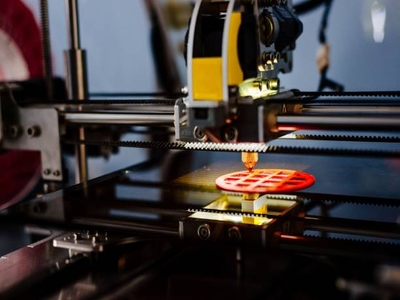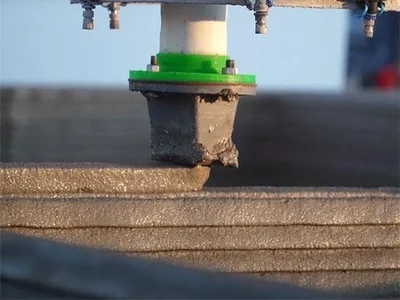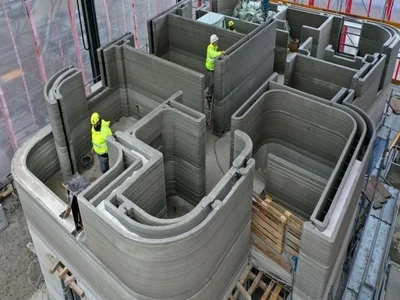3D printing is changing the world in many different ways, and one of the most prominent examples is the world of printed houses.
SQ4D 3D Printing is at the forefront of this movement.
Not having shelter can have fatal consequences.
With a housing shortage threatening to leave millions of Americans without proper shelter, the need to build affordable houses is more pressing than ever.
3D printing can solve America’s housing crisis. We take an in-depth look at one of the companies at the forefront of 3D printing houses – SQ4D Inc.
Read our guide to learn about this exciting new technology!
What is SQ4D Inc?

SQ4D 3D Printing is a company founded by Kirk Andersen, who started as a 3D printing hobbyist and avid home builder.
They are currently headquartered in Patchogue, New York, but the company is beginning to spread outside its home state.
With just under 50 full-time employees, SQ4D 3D Printing is a relatively small company, but that does not mean their work is insignificant.
SQ4D Inc. is one of the world’s leading 3D structure printing companies.
It has the lofty goal of revolutionizing the entire housing industry by introducing safe, affordable, and eco-friendly 3D-printed houses.
This impressive goal explains the company’s slogan, “Changing the Way the World is Built.”
How Does SQ4D Inc. Print Houses and Other Structures?

The key to SQ4D’s growing success is its patented ARCS printing technology.
The short video below illustrates how SQ4D 3D Printing has used its ARCS printing technology to build the world’s largest 3D printed house in Calverton, New York:
This unique form of 3D printing uses a robotic arm to build the foundations, exterior walls, utility conduits, and interior walls of a structure.
This process is completed according to the specifications of whatever 3D model is uploaded to the system.
This digitally driven printing system uses rails to maneuver around the building site.
The machine-operated printer can move much faster than a human laborer, so homes and other buildings are constructed in significantly less time than using conventional construction methods.
How Long Does an SQ4D ARCS 3D Printer Last?
The ARCS printers SQ4D 3D Printing uses for its 3D printed houses are of the highest quality, aircraft-grade aluminum, and stainless steel.
These printers are incredibly rugged and can last for years without issues.
Their ARCS printers are designed to withstand the rigors of exposure to all kinds of outdoor weather conditions and the standard abuse any piece of construction equipment is exposed to on a building site.
That being said, maintenance is vital because the materials ARCS printers use to print the houses and other structures can be pretty messy before they harden.
Therefore, SQ4D does admit that their printers require professional maintenance between jobs.
Read More: Thangs 3D Printing – a 3D model search engine perfect for novice and experienced 3D printing enthusiasts alike!
SQ4D Printing Process

Prepare The Site
Before the SQ4D 3D Printing process can occur, human workers prepare the building site and install the underground plumbing.
From there, a trained crew sets up the ARCS 3D printer and the rails it will use to maneuver around the building site.
While this can be somewhat time-consuming, it still takes significantly less time than the setup process involved in preparing a traditional construction site.
Excavate For Footing
Once the basic preparations have occurred, the crew will excavate the footing.
From there, the ARCS printer will fill that footing with concrete, laying the foundations for the entire structure, which is a crucial step.
The Walls
Once the footing is put down, the printer will begin printing foundation walls.
These walls are reinforced with rebar for additional strength. The building crew will position the rebar before the printer starts its work.
The crew will then install a vapor barrier and conduit, which must be done by hand. The printer then prints a smooth foundation over this layer.
Then, the printing of the actual walls of the structure can occur, and the building will start to take shape.
Electricity
While the build material is still wet, the human crew can cut out holes for electrical boxes and make other necessary structural alterations.
From there, they can install the electrical boxes immediately, saving time over installing them after the project is complete.
A Finished House
Once the structure’s walls are appropriate, the building crew can frame the windows and doors, which is often done with lumber.
While the process may sound somewhat complicated, it is incredibly efficient compared to traditional construction methods!
Read More: 3D Printing Revolution. See where 3D printing technology began and how it continues to develop!
Advantages Offered by SQ4D 3D Printing
The ARCS printers used by SQ4D 3D Printing to print full-scale buildings offer numerous advantages over traditional building methods.
Essentially, these advantages boil down to four main categories: increased completion speeds, cost savings, stronger structures, and much safer build sites.
To help you have a better understanding of what SQ4D’s 3D structure printing promises, we are going to take a closer look at these advantages below.
1. Speeds – Accelerated Build Times for Construction Projects
The ARCS printer can print concrete at a rate of 400 to 700 inches per minute, which is faster than the rates achievable using conventional concrete pouring methods.
The ARCS printer is calibrated to add each layer of concrete immediately after the layer that preceded it has dried.
The concrete forms a proper bond, and there is little downtime between pours.
Another way printing a house using an SQ4D ARCS 3D printer is faster than conventional building methods is that all of the design and preparation work can be followed seamlessly.
The computer feeds the design to the printer instantaneously, so there is next to no downtime during the printing process.
Seamless Planning and Execution
The design and printing process also streamlines the jobs that would otherwise need to be coordinated by several trade specialists.
This means the laying of the groundwork for a structure’s plumbing and electrical work can coincide without interference.
The 3D printing process used by SQ4D 3D Printing is also capable of printing the footings, foundations, and walls at the same time.
Through this seamless printing process, no time is wasted setting up scaffolding or performing other manual tasks that can take a long time, like stacking and laying foundational bricks and cinder blocks.
Much Faster Set Up Time Than a Traditional Build Site
The setup and preparation time is also incredibly fast compared to the time it takes to organize a traditional build site.
While you can set up the ARCS 3D printer and its rail system within 6 to 8 hours, the preparation for a home build site could take days to weeks to do so correctly.
Ability to Print Outside of Standard Working Hours
The ARCS 3D Printer used by SQ4D is efficient and quiet, so printing can occur at night.
Not only would noise concerns limit the amount of work you could complete per day at a conventional build site, but most construction projects require daylight.
On the other hand, 3D printing of a structure can occur at all hours, so projects are completed in significantly less time.
These advantages add up to an average project completion rate roughly 3 times faster than building the same structure using traditional building methods!
2. Significant Financial Savings – Projects Completed at a Much Lower Cost
Another reason for the growing popularity of the SQ4D 3D Printing method of printing houses is that it can offer unprecedented savings.
Compared to the costs associated with building a house using traditional methods, these projects are completed at a much lower cost.
Reduced Labor Costs
Given that the ARCS 3D Printer only requires a team of three workers to monitor it, the labor cost is dramatically cheaper than the personnel necessary to keep a traditional construction project running.
Fewer personnel required means less money is spent on wages and other employee-related expenses.
You also do not have to pay nearly as much liability insurance if you operate a build site with a smaller crew.
Not only are the three-person crews much smaller than a traditional construction crew, but the inherent safety of 3D printing means worker-related insurance claims are minimal.
Automating the job is safer and more affordable than completing jobs by hand.
Much Lower Costs Related to Utilities
The ARCS 3D Printer also runs on as little power as possible.
To put these cost-savings in perspective, when running, this incredibly efficient piece of machinery draws a similar current to a standard hair dryer!
This printer is extremely cost-effective when compared to the power requirements of a traditional build site that is needed to keep lights, power tools, and other pieces of equipment running.
Heavy machinery also uses an incredible amount of fuel, which is not something you have to worry about when 3D printing a structure.
Fewer Limitations on the Complexity of a Project
Since you do not have to worry about hiring more skilled or larger crews to complete a more complicated build with 3D printing, costs can be much lower for complex projects.
To keep costs low, many design firms will simplify projects.
However, when SQ4D 3D Printing is used to print a structure, you do not have to worry about more complicated projects leading to higher final costs.
Reduced Material Costs and Waste
The SQ4D 3D Printing process uses a unique blend of concrete designed to be the perfect balance between durability and affordability.
Their ARCS 3D printers use their patented Zeero Waste printing process, which ensures the printed builds only use the exact quantity rather than wasting excess concrete.
Building a structure using traditional methods wastes a significant amount of concrete due to spillage and heavy pours.
With 3D printing, the printer only pours what is needed, so the total cost is cheaper, and the buildings always have a consistent strength.
Read More: 3D Printers for ABS Architectural Models. If you’re an architect, these printers can take your models to the next level!
3. Stronger Structures – Concrete Strength Tests Double the Industry Standard

The ARCS 3D printing method used by SQ4D creates stronger buildings than you typically get when pouring concrete using traditional methods.
Compression strength tests show that 3D-printed concrete typically exceeds the industry standard by double!
Outstanding Wind Resistance
Buildings are cheaper to construct, faster to make, and incredibly durable.
The buildings also have excellent wind resistance thanks to the layered technique used when 3D printing concrete, and all of the homes 3D printed by SQ4D are reinforced with rebar.
Ability to Withstand Floods
The unique material SQ4D prints can also withstand direct contact with floodwater for prolonged periods.
Given how many homes sustain damage from floods, pipe leaks, and tropical storms, the potential for flood-resistant 3D-printed houses is immense.
Fire-Proof Build Materials
Like other concrete structures, 3D-printed homes have exceptional resistance against fire and high heat levels.
Not only are the structures resistant to fire-related damage, but since the materials are fire-resistant, this means fires are less likely to start in the first place.
Thanks to the unique layering that occurs with 3D printing concrete materials, there are also no air pockets or bubbles within the walls and foundations of the structure.
This reduces the chance of cracks and other fire-related damages.
Resistance to Decay and Pest-Related Issues
Unlike structures framed in lumber, 3D-printed concrete homes are resistant to decay caused by mold and rot.
These structures also present a far less inviting environment for destructive pests, like termites and ants.
Rodents are also far less likely to seek out 3D-printed concrete structures because they cannot burrow through the materials as they can with lumber and drywall.
4. Safe Worksites and Builds
The near full automation when 3D printing a structure is incredibly safe.
In fact, 3D printing structures, rather than constructing them by hand, is much safer for workers than any alternative.
Reduced Levels of Danger on the Build Sites
Traditional build sites pose numerous risks to workers.
Workplace accidents can be fatal in the construction industry, and any improvements to safety are incredibly valuable.
Thanks to the automation of 3D printing, SQ4D 3D Printing claims it has practically eliminated OSHA’s top “Fatal Four” construction accidents.
With an estimated 150,000 construction-related injuries occurring every year in the United States alone, any improvement to workplace safety in this industry is welcome.
Thanks to 3D printing, construction does not have to be a dangerous industry.
A Safer Environment
3D printing using ARCS means almost no laborers are required to enter the site perimeter as the structure is assembled.
They simply need to keep feeding the printer the printing material, and the ARCS printer will handle the rest!
Since an ARCS 3D printer only requires a crew of two to three people to operate it safely, the chances of workplace injuries are reduced with this smaller operating crew.
In other words, fewer people on a site mean fewer people getting hurt.
Safer and More Durable Structures
As mentioned above, structures built using the ARCS 3D printing method are incredibly durable, which also means they are very safe.
SQ4D strength tests their buildings with over 6,000 psi of compressive force, and the structures can withstand it comfortably.
This means there is a significantly reduced chance that the structure will collapse and cause injuries or fatalities when fully assembled.
In other words, injuries related to structural integrity lapses are practically non-existent, thanks to 3D printing.